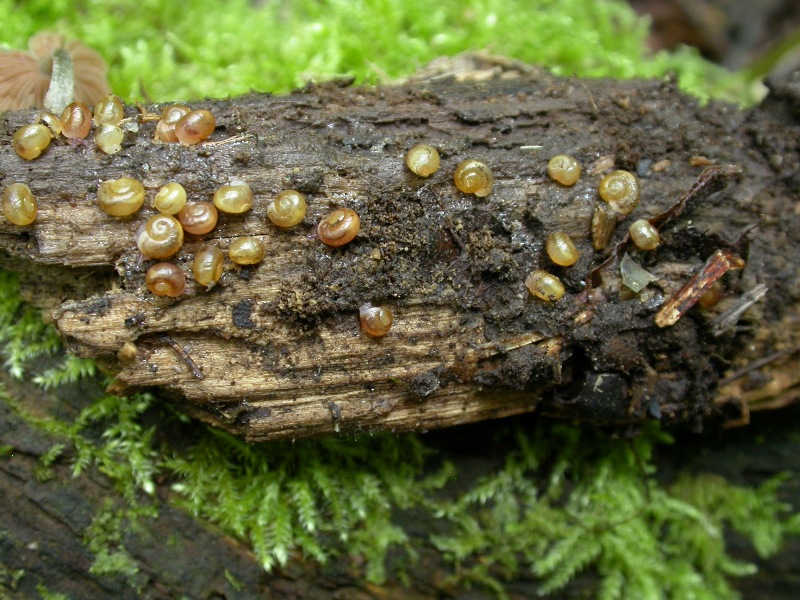
Habitat
Allogona townsendiana can be found in the
western Cascade Range, Puget Trough, and
eastern lowlands of the Olympic Peninsula in the United States
north into southwestern British Columbia. There are two outlying
populations, in Langley, which is an island near Seattle, and on southern
Vancouver Island (Forsyth
et al 2002).
 Allogona townsendiana occupies
mixed-wood and deciduous forests, typically dominated by Bigleaf
Maple (Acer macrophyllum). Dense cover of low
herbaceous vegetation is usually present (Forsyth
et al 2002). Stinging Nettle (Urtica dioica) was also
often present. In addition to providing food, the presence of
nettles may discourage the chance of their habitat be trampled,
but may also suggest moist surroundings. Allogona
townsendiana probably requires coarse woody debris, large
amounts of leaf litter, and both living and older, dying
vegetation (Forsyth
et al 2002). The forest canopy provides shade that conserves
moisture and better regulates fluctuations in temperature and
moisture conditions on the forest floor (Forsyth
et al 2002). In Washington, A. townsendiana is
found in seaside locations where a portion of the population
lives under logs just above the highest tides in association
with the Pacific Sideband Snail (Monadenia fideli).
Allogona townsendiana occurs at low elevations. Late spring
may be an optimal time for locating adults, but the inability to
find juveniles suggests that they are more secretive or may
occupy different microhabitats, such as spaces within forest
floor
litter (Forsyth
et al 2002). The habitat of this particular snail will
greatly affect its diet and how it obtains food.
Allogona townsendiana occupies
mixed-wood and deciduous forests, typically dominated by Bigleaf
Maple (Acer macrophyllum). Dense cover of low
herbaceous vegetation is usually present (Forsyth
et al 2002). Stinging Nettle (Urtica dioica) was also
often present. In addition to providing food, the presence of
nettles may discourage the chance of their habitat be trampled,
but may also suggest moist surroundings. Allogona
townsendiana probably requires coarse woody debris, large
amounts of leaf litter, and both living and older, dying
vegetation (Forsyth
et al 2002). The forest canopy provides shade that conserves
moisture and better regulates fluctuations in temperature and
moisture conditions on the forest floor (Forsyth
et al 2002). In Washington, A. townsendiana is
found in seaside locations where a portion of the population
lives under logs just above the highest tides in association
with the Pacific Sideband Snail (Monadenia fideli).
Allogona townsendiana occurs at low elevations. Late spring
may be an optimal time for locating adults, but the inability to
find juveniles suggests that they are more secretive or may
occupy different microhabitats, such as spaces within forest
floor
litter (Forsyth
et al 2002). The habitat of this particular snail will
greatly affect its diet and how it obtains food.